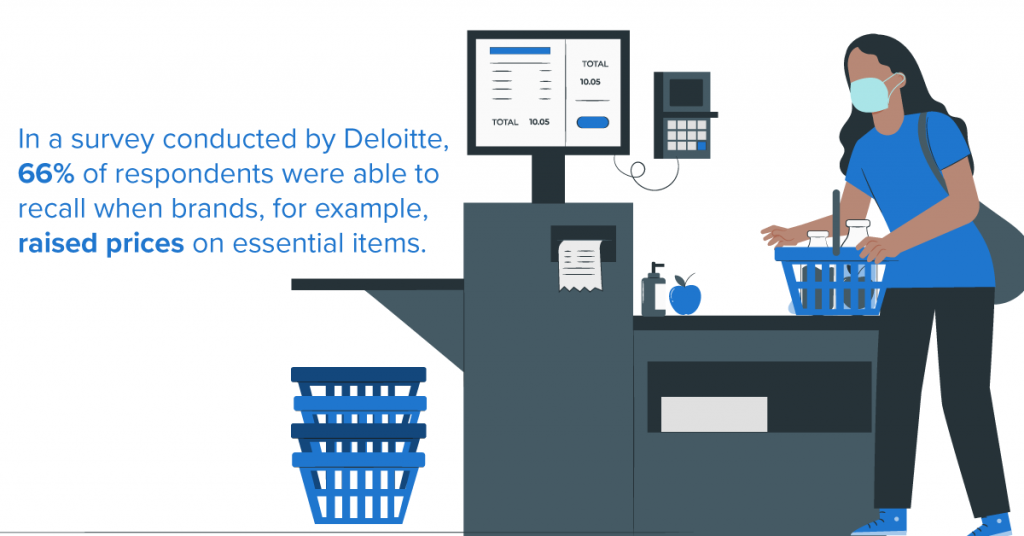The COVID-19 pandemic transformed the world in many ways. Consumers, whose dramatic shift in behavior has been observed, reportedly experienced an increase in digital adoption during the crisis. This compelled more businesses to undergo digital transformation and come up with a digital marketing plan to adapt to market changes. Aside from this, new trends have also emerged this year which are expected to last even after the pandemic ends.
With the development of the coronavirus vaccines, global economic recovery is in sight and companies’ race to the top continues. Some companies looked for ways to set themselves apart from the competition by providing value to consumers during the crisis through personalization and convenience. Some developed technologies to provide customers a smooth experience during the digital transition— which 73% of customers cite as an important factor in their purchasing decisions, according to PricewaterhouseCoopers.
Others put greater emphasis on customer and employee safety during the pandemic.
But with the loss of employment, the expected decrease in consumer spending, and the overall global economic impact of the pandemic, some marketing strategies won’t work like they used to.
These changes contributed to the acceleration of trends within a few months’ time to a level that otherwise may have taken years to develop without the pandemic. According to Adobe, trends like automation, 3D creation, and remote work have seen a dramatic increase in adoption during the COVID-19 crisis as a result of social distancing measures. These accelerated trends are expected to “give birth” to new trends as the new normal continues to be shaped and reshaped by policies and norms to combat the spread of the virus.
What will these new trends be and how will they affect businesses? Here are 5 digital trends to look out for in 2021:
1. Omnichannel Marketing Is In


With the increasing adoption of technology to make purchases, customers will be seen across different digital touchpoints. They may be seen making purchases on their mobile phones, browsing for products on their PCs, consuming entertainment on connected TVs, among others.
“Non-linear customer journeys” will become more evident, meaning that potential customers will no longer come from a single touchpoint to take the journey into becoming actual, paying customers. Instead, leads will be funneled from different touchpoints— e-commerce platforms or digital channels— to connect with your business.
This highlights the importance for businesses to deliver a unified brand experience across digital and traditional channels and devices, monitor each touchpoint for continuous improvement, and spot opportunities to trigger purchase behavior among leads. This leads to better brand visibility, better data collection mechanism, and better synergy across departments and channels.
2. Increased Adoption of Agile Marketing and Automation


Deloitte recently released a report claiming that “agility” will become a top marketing trend in 2021. According to the report, the current pandemic-triggered recession makes it imperative for businesses to gain a “deeper understanding of the fluid state of the marketplace.” Customer needs are quickly changing and so brands should “nimbly switch offerings” to react to these changes.
The report claims that around 58% of more than 2,400 global consumers could identify a brand that does this— and two-thirds of the surveyed consumers had an increased appreciation for well-designed technologies.
Agile marketing efforts in combination with marketing automation technologies can help businesses gain a quick understanding of the evolving needs and preferences of their customers and their digital leanings, allowing decision-makers to mark an impression among their target consumers in a turbulent market.
Marketing automation technologies also improve lead management— the gathering of leads across all touchpoints— and nurture them with minimal human intervention. The technology helps ensure a better overall user experience through targeted messaging and personalized service. Marketing automation has been observed to increase brand loyalty and improve sales revenue.
3. More Appreciation for Brand Transparency and Value Proposition


In a period where consumers are highly likely to switch brands, transparency can have a big influence on a customer’s purchasing decision. Brand transparency is characterized as the ability of an organization to provide objective information to customers regarding its products, services, and details about its activities to fulfill its mission. Information is highly accessible in the modern market and consumers would want to know the value that they’re getting when buying from you.
The inability to provide the correct information increases the chances of the brand being unable to match customer expectations, which leads to them churning out and switching to other more reliable brands. Trust is only formed when brands are able to deliver their promises.
And the online space can be a difficult place to build trust, especially in these turbulent times. In a survey conducted by Deloitte, 66% of respondents were able to recall when brands, for example, raised prices on essential items. This leads to more than one in four respondents walking away from the brand in question.
Businesses, therefore, should exert extra effort on ensuring that they can deliver what they promised while considering employee and consumer values. For businesses, this will be rewarding. According to Deloitte, customers are more than two times as likely to be repeat purchasers when they trust the brand.
4. Video Is the Way to Go


YouTube is one of the most successful online platforms today. It has around 2 billion active monthly subscribers in 2020 (from 1.8 billion in 2018). There’s a reason for this— the generations of today no longer enjoy readings as much as the generations before them. To the members of Generation Z and Generation Alpha (even some Millennials), videos are a predominant means of entertainment.
If you want to reach out to your target customers, videos are a way to go. They are brief, visually stimulating, and effective in engaging potential customers. Being short and impactful is an important standard these days as most people’s attention span is limited and especially when consumers will potentially experience an information overload.
So how do you make a video? First, start with a plan (and track your progress). Next, gather what you know. This will be important in determining the next steps— what do you know about your target market, what do they need, what do they prefer, what services are they more likely to get, etc. Then start creating.
It is important here that you monitor the performance of your videos. Are people engaging with it? Is it gathering leads? Is it converting leads to customers? These numbers will be crucial in determining what elements are effective so you can adjust your digital marketing plan and effectively engage your target customers through videos in the future.
If needed, team up with influencers who have amassed a following. Remember how people are more likely going to buy from a brand they trust? This applies here too. Trust is easily built when a known and influential person is at the forefront of your message. And it won’t be difficult to persuade your target audience to take the next step.
5. Go Mobile


Going mobile is not a new trend but it’s going to be more relevant next year. According to Insider Intelligence, mobile eCommerce (m-commerce) is forecast to reach $284 billion, or 45% of the total U.S. e-commerce market, by the end of 2020. That means more people are going to make their purchases, browse products, and engage with targeted messaging using their phones.
Purchases using mobile phones are popular among Gen-Z-ers and Millennials (generations with massive purchasing powers) and by 2024, m-commerce will reach $488 billion, according to the research firm.
Businesses are highly encouraged to make their brands accessible to mobile phones through websites, social media, or apps. Even services such as mobile money transfers, digital content purchases, and delivery, and contactless or in-app payments are worthy of consideration when looking to upgrade your mobile presence.
Going mobile has been observed to improve the overall experience for customers. It provides an omnichannel experience and a variety of payment options for customers— which only makes it easier for them to make a purchase and grow your sales.
Mobile eCommerce needs constant optimization, however, and can be risky. When you fail at providing a smooth digital experience to your customers, it can lead to customer churn out. There’s also the risk of a security breach— which means added expenses for your business to ensure this does not happen. But going mobile increases your accessibility not only to your existing customers but also to the prospective ones.
The overall convenience that you provide may serve as good advertising through word-of-mouth, especially towards the tech-savvy generations. Going mobile will continue to be a trend to watch out for in 2021.


So these are the 5 Digital Marketing Trends to look out for in the upcoming year. With the ongoing changes in the market, omnichannel marketing is a safe bet to keep leads engaged and turn them into customers.
Agile marketing and automation are also must-haves for next year, especially when the competition is tight and consumers prefer value-for-money. Businesses must be transparent. Videos should be used as a dominant means of engaging consumers and having a mobile marketing strategy is a bare minimum.
Craft an effective digital marketing strategy now with us here at Eight Media.








